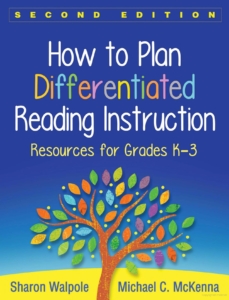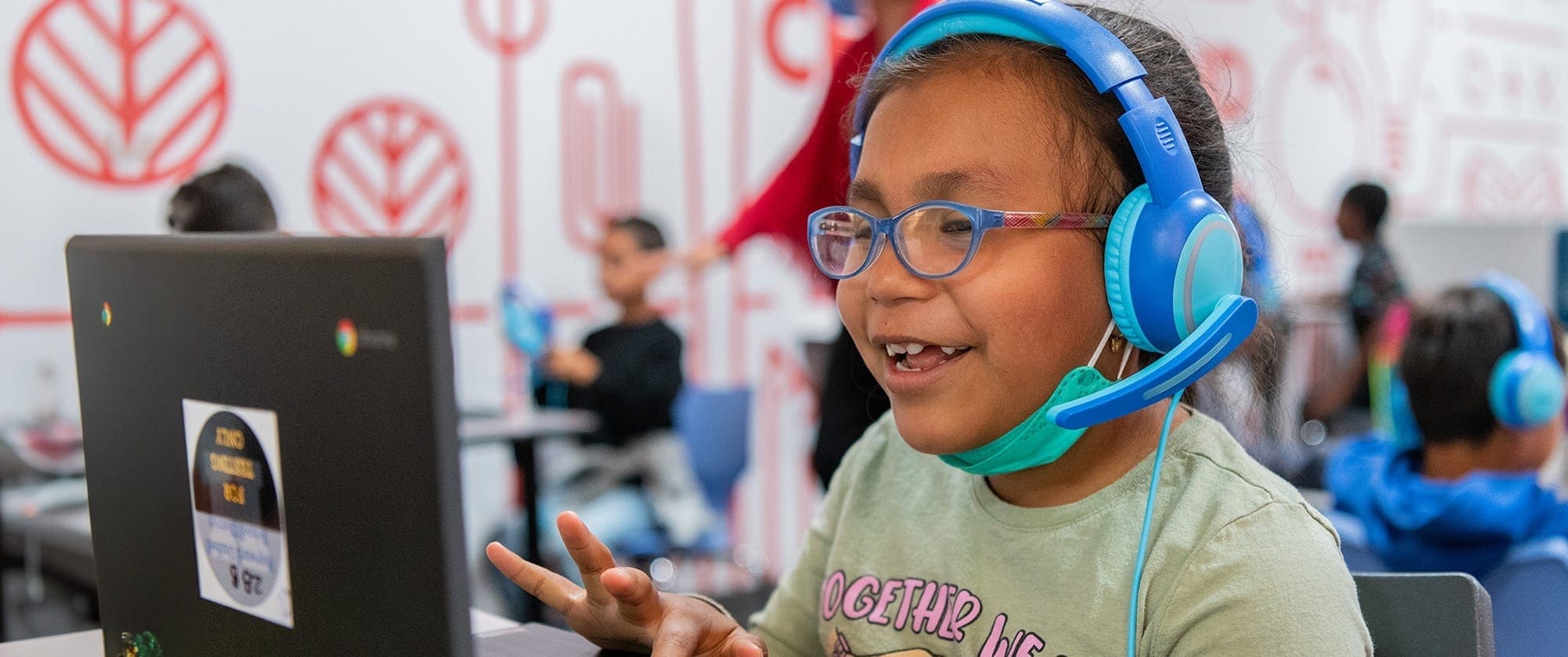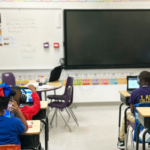Every classroom is filled with students who have strengths and needs as unique as the child themselves. This makes differentiated reading instruction both crucial and a fundamental challenge of teaching students how to read.
Research on how the brain learns to read tells us that in order for all kids to crack the code and read with automaticity and fluency, they need explicit, direct instruction with intentional repetition.
Some kids may require thousands, if not hundreds of thousands of repetitions before developing automatic word recognition and fluency.
Unlocking Differentiated Reading Instruction
The modern classroom, with one teacher to nearly 25 students, makes it incredibly difficult to provide differentiated reading instruction to every student—no matter how well-intentioned, organized, and strategic a teacher may be.
I know; I was once a fourth grade teacher.
There simply isn’t enough time in the day with the traditional structures that are part of school programming and the never-ending demands placed upon teachers.
But what if we changed the paradigm so that instead of one teacher trying (and not succeeding) to differentiate reading instruction to meet 25 students’ individual needs, there were 25 highly-skilled reading tutors working one-on-one with each student every day not only teaching them to read, but also building a caring relationship to instill confidence and grit?
What if, instead of demanding that classroom teachers teach all skills to all learners, we freed them up to tackle those crucial components of early literacy that can be successfully taught in core instruction and small groups?
What if the dream of RTI or MTSS could truly be achieved? Imagine a world in which foundational skills, which require highly targeted differentiated instruction, were taught 1:1, freeing classroom teachers to focus on vocabulary, background knowledge and verbal reasoning in targeted small groups.
Could this paradigm work? The answer is a resounding “Yes.”
A Prescriptive Approach to Differentiating Literacy Instruction
There’s a huge amount of research behind the Science of Reading that helps us understand how brains learn to read. The approach that has emerged from all this research is called structured literacy, and it comes with a prescribed set of skills to be taught and principles for teaching them.
It’s straightforward to master and viable to train a lot of people in–particularly with the right curriculum and professional development. And that’s exactly what we’re doing at Ignite Reading: empowering enough highly skilled reading tutors to give every student the differentiated, one-on-one instruction they need to become successful readers.
We know from experience that it’s possible to achieve this and to scale it to classrooms across the country. Here’s how:
A Teachable Curriculum
Ignite! Reading’s structured literacy curriculum was developed at the University of Delaware by Dr. Sharon Walpole and the late Dr. Michael C. McKenna. Because Walpole understood that teachers were already doing so much, her vision was to create something easy to use and highly teachable.
With some curricula, each day can be a new dance, which naturally leads to missteps. The beauty of Walpole and McKenna’s approach is that, within each unit, instructors are doing the same dance, or lesson, over and over, just with different music, or content.

This gives them the opportunity to get really good at what they’re teaching, practicing the same skills until they have their routine perfected. For students this means they aren’t lost in the labor of learning routines and their brains can focus on the most important thing—learning to read.
Certification and Accountability
Our curriculum may be straightforward, but mastering it still requires the right learning, practice, and coaching. That’s where Ignite Reading’s robust certification program comes in.
Our training team leads new tutor educators through 60 hours of professional learning, building their knowledge in the history of literacy and language; the complexity of the English orthography; the Science of Reading; and the components and principles of structured literacy.
At the same time, our tutors also do an additional practicum experience, developing their teaching muscles through daily practice with each other and students.
And perhaps most importantly, we hire tutors who are coachable. While skills are teachable, disposition is less so, and any great teacher is one who is willing to take and act upon feedback.

It is important that our tutors understand that and are open to growing and developing to be their best in service of kids.
The research shows that there is a “right way” to teach reading, so if a tutor is getting it wrong, it’s imperative for them to quickly correct course with no ego involved.
Which brings us to a third element critical for giving every student the right instruction: accountability. Ignite’s literacy team observes tutors to ensure they’re teaching the curriculum with fidelity. This is not a “gotcha” tactic; it is in service of equity.
We believe all students deserve access to high-quality, differentiated reading instruction underpinned by a research-based curriculum, and effective reading tutors are the way to ensure that access. With our model and virtual teaching approach, we have the luxury of ensuring all tutors are executing the curriculum with fidelity, moving through instruction at the right pace, progress monitoring at the appropriate time, and responding to data accurately.
This is nearly impossible in a traditional school building–while the desire is there, the resources may not be.
Data-Driven Reading Instruction
A primary principle of structured literacy is to be diagnostic and responsive. Ignite Reading trains its tutors to be data driven—to collect a range of data and respond to it. Our science of reading certification process includes teaching tutors to work with our data systems to collect data every day on every student.
With each data point they collect, they’re better able to shape how they’ll help students move through that day’s lesson and target the right skills in the next one. Tutors also learn to progress monitor every 14 lessons, immediately incorporating the results into the next day’s instruction.
This obsession with data helps us go above and beyond to make sure what we’re teaching is exactly what each kid needs, and that schools have every data point possible to understand how their students are progressing.
We are data nerds…and proud of it!
Providing every student with a highly skilled reading tutor isn’t a pipe dream—it’s what we’re doing every day at Ignite Reading. Our fully scripted, research-based curriculum sets tutors up for success.
Our rigorous training and data-driven focus keep student learning consistent and individualized. Our tutor pool is wide and deep and full of instructors ready to meet every kid where they are, respond to their individual needs, and transform them into fluent independent readers and avid book lovers.
There is a model out there to fix our nation’s literacy crisis. And Ignite Reading is doing it.
Content updated April 2024



